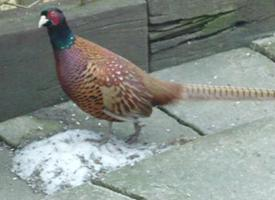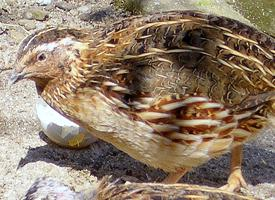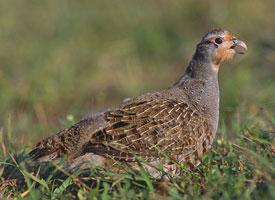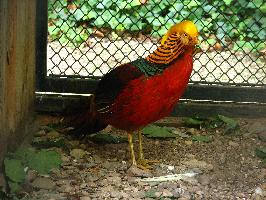
Popis zvířete
The Common pheasant (Phasianus colchicus) is a bird that belongs to the pheasant family and is one of the world's most hunted birds. This species exhibits remarkable diversity in plumage, size, and habitat preferences, making it an interesting subject of study for both ornithologists and nature enthusiasts. Originating from Asia, it has been widely introduced elsewhere, often for the purpose of hunting, and has established stable populations in many parts of the world, including North America and Europe.Physically, the Common pheasant is notable for its striking appearance, particularly in males. Male pheasants, or cocks, are larger than females (hens) and have a more vivid coloration. They typically showcase a dazzling array of colors: their bodies are adorned with iridescent copper and gold plumage, accented with splashes of deep green, rich chestnut, and bright red around the face and neck. The males also boast long, pointed tails that add to their distinctive silhouette. Females, in contrast, are much more subdued in their coloration, with mottled brown feathers that serve as excellent camouflage in their natural grassland and woodland habitats.
The Common pheasant is a versatile forager, with a diet that spans seeds, grains, fruits, insects, and small reptiles. This adaptability in feeding habits has allowed it to thrive in a variety of environments. It typically forages on the ground but can take to the trees to roost or to escape predators.
Speaking of habitat, these birds are highly adaptable but prefer areas with a mix of farmland, woodland edges, and open fields. Such environments provide them with the necessary cover from predators and the variety of food sources they require to sustain their diet. Despite their ability to adapt, habitat destruction and overhunting have led to declines in certain populations, highlighting the need for conservation efforts in some areas.
Reproduction is another notable aspect of the Common pheasant's biology. The breeding season sees males becoming highly territorial and engaging in vivid displays to attract females. These displays include loud calls, erecting their plumage to appear larger, and sometimes engaging in physical combat with rivals. After mating, the female lays a clutch of 8-15 eggs, which she incubates for around 23-26 days. The chicks are precocial, meaning they are relatively mature and mobile from the moment of hatching, enabling them to follow their mother and feed themselves almost immediately.
The Common pheasant's ability to adapt to various environments, coupled with its importance in hunting and gamekeeping, has made it a significant species both ecologically and culturally. While it is considered of "Least Concern" by the International Union for Conservation of Nature (IUCN), localized threats and habitat changes necessitate ongoing monitoring to ensure that its populations remain stable and sustainable. In summary, the Common pheasant is a fascinating and resilient bird, whose presence enriches the biodiversity of the ecosystems it inhabits.
Podobná zvířata
Nové fotografie zvířat
Top 10 zvířat
- Chinese water dragon (Physignathus cocincinus)
- Dolphin gull (Leucophaeus scoresbii)
- Japanese macaque (Macaca fuscata)
- Galápagos tortoise (Geochelone nigra complex)
- Colombian red howler (Alouatta seniculus)
- Sea urchins (Echinoidea)
- Barbary macaque (Macaca sylvanus)
- Moustached guenon (Cercopithecus cephus)
- Diana monkey (Cercopithecus diana)
- Angolan talapoin (Miopithecus talapoin)


